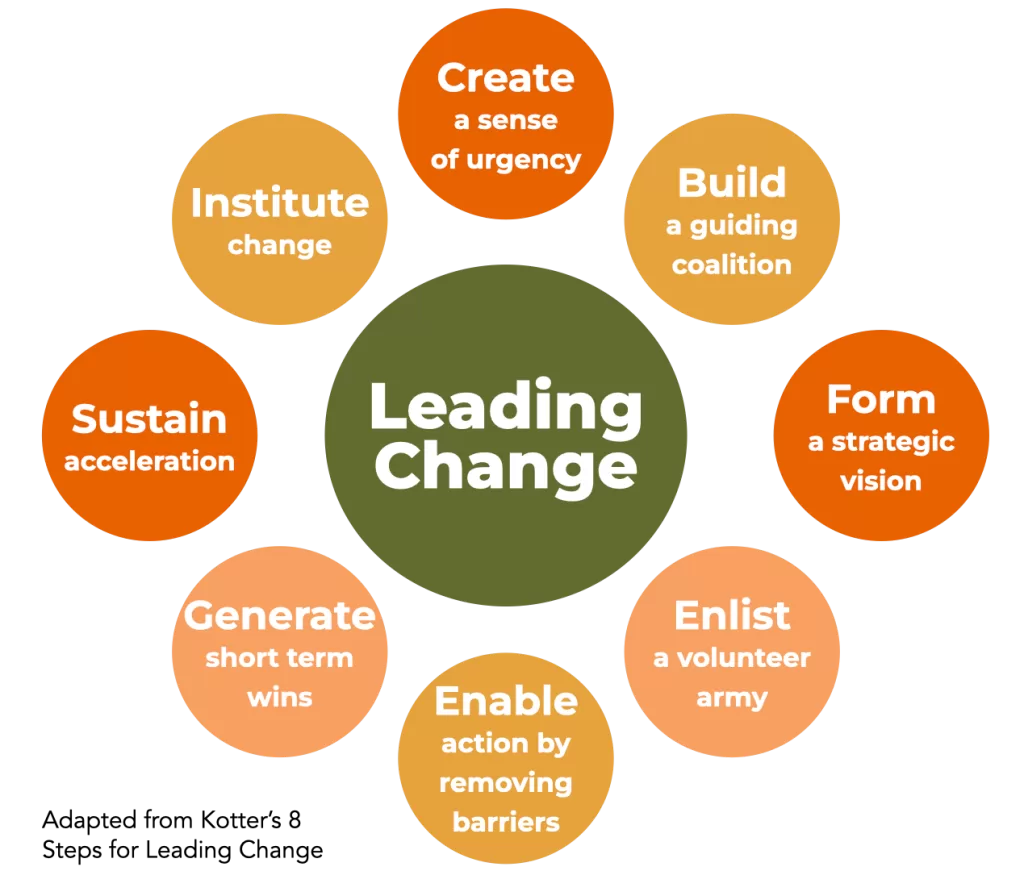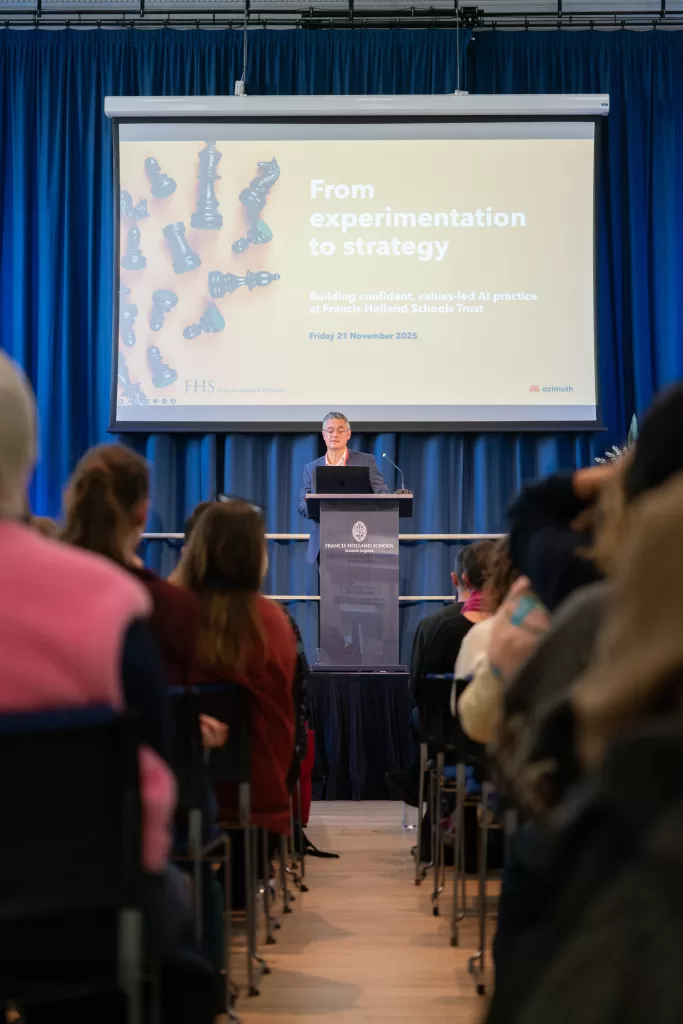While this reflection is grounded in school leadership (where I have worked and coached for many years) the dynamics described here echo more widely, across organisations, sectors and hierarchies. Wherever leadership is mythologised, we often reach for familiar archetypes: the lone hero, the bold reformer, the visionary outsider.
Charisma Isn’t a Strategy
There exists, in many open day presentations and in more than a few school prospectuses and websites, the legend of the visionary headteacher. Often described as “dynamic,” “transformational,” “a force of nature.” They act decisively. They disrupt. They deliver in the short term. And they are a gift to the Marketing Department.
The appeal is understandable. In popular culture, business, and leadership writing, the lone leader is often cast as the hero—the singular figure who sees what others cannot and dares to act where others hesitate.
In schools, too, there are moments that demand courage, clarity, and a willingness to challenge orthodoxy. This is not an argument against originality or principled decisiveness. There are times when organisations need brave, unorthodox leadership. But bravery without connection, and change without alignment, rarely endure. When boldness becomes bravado, and vision becomes vanity, the line between leadership and micro-managing control inevitably blurs.
Intent Isn’t Impact
And yet, like many leadership myths, this story of the heroic individual reveals more about our collective fantasies than it does about the complex realities of school leadership. It becomes a dangerous fiction that not only distorts our expectations of leadership, but risks eroding the very cultures of collaboration upon which sustainable school improvement actually depends. Befuddled by complexity and seduced by simplicity, we reach for the lone leader not necessarily because they are what schools need, but because they are good salespeople, selling the illusion of control, of certainty, of clarity.
The reality, of course, is more mundane and more profound. Schools thrive not because of lone heroes, but because of strong, values-aligned teams. John Kotter reminds us that real change happens when a guiding coalition takes shared ownership, and not when a single individual attempts to drive transformation from the top down. Daniel Goleman’s research into emotional intelligence and leadership styles affirms the same: the most effective leaders are those who foster climate, not those through whom everything must flow. They set the tone, not targets. They listen more than they proclaim.

If toxic leadership is often marked by ego, then healthy leadership is rooted in humility. Not the false humility of performative modesty, but the deep, authentic humility of someone who knows they cannot go it alone. Tim Brighouse argues that leadership in schools is a collective endeavour. The “we” always matters more than the “I.” Great heads know when to speak, but they also know when to step back. They resist the seduction of saviourism.
The Righteous Steward
The most dangerous leadership archetype is not the swaggering narcissist, but the righteous steward who believes control is care.
These leaders see themselves as custodians, guardians of institutional purpose, defenders of excellence, standard-bearers of either tradition or reform, whichever banner best fits the narrative at the time.
It is precisely because they believe they are acting in service of a higher good (a vision, a legacy, an ideal for the school…) that they act with righteousness born of conviction. And that, arguably, is harder to challenge because their cruelty is cloaked in care. “I’m doing this for the children” becomes the ultimate justification. Not too dissimilar to“I’m just following orders.”
Sophocles offers us the perfect metaphor in Creon, the ruler of Thebes in Antigone. Creon is not a villain in the classic sense. He is principled, intelligent, and utterly convinced of the moral rightness of his actions. He believes he is preserving order and honouring the gods. But in doing so, he silences dissent, punishes loyalty, and brings devastation upon his family and his city. His tragedy is not tyranny, it is certainty. He cannot imagine that he might be wrong. And so his belief justifies every dissembling manoeuvre, every act of veiled retribution; and his vision blinds him to the wreckage he leaves in his wake.
Tentacles Without Touch
This myth takes many forms. In practice, it often manifests not in flamboyant shows of ego, but in subtler, more insidious patterns of control. One I’ve come to recognise is what I call the Octopus Head: each decision, each initiative, each moment of consequence is controlled from the centre. Every tentacle of the organisation is directly connected to the head, but the limbs are not connected to each other. Academic has no idea what Pastoral is doing. Marketing operates in isolation. As a consequence, middle leaders are pulled in multiple directions, and always operate slightly off balance. The head knows everything, and no one else knows enough.
At first, it can feel impressively centralised and streamlined, even visionary. Everyone in their swim lane. But soon the effects begin to show: incoherence, fatigue, learned helplessness, and a slow corrosion of trust. The centre becomes the throttle, not the engine, as everything must pass through the head, so progress can only move as fast as their capacity allows. It is leadership as command and control (which does have its place in organisations), but dressed in the language of care, framed as stewardship, cloaked in the myth of necessity. “Only I can hold this together,” the Octopus Head thinks. And so, surrounded by what they interpret as incompetence, they tighten the grip.
In coaching conversations with senior leaders, I often ask a simple question: What are you modelling? Are you modelling clarity or confusion? Trust or control? Openness or defensiveness? The myth of the heroic leader leaves no space for such questions, because it locates leadership in the person, not in their practice. In the myth, schools become theatres where appearances matter more than relationships, and performance is mistaken for purpose.
No Red Capes, Just Clarity
So what’s the alternative?
Not passivity. Not indecision. Not the corporate sheen of “distributed leadership” as lip service. But a deeper, more demanding form of leadership rooted in discernment and dialogue. A leadership that builds coalitions and treats friendly dissent not as disloyalty, but as a constructive challenge. Collaboration doesn’t mean consensus-seeking in all things. It means aligning people around a shared purpose, so that decisions, when they must be made, are understood, not imposed.
The strongest leaders I’ve worked with appear the least dramatic. They resist the glamour of grand gestures. They are steady, not showy. They rarely use the word “I.” And yet, their influence is unmistakable, visible in the confidence of their staff, the texture of their culture, and the moral coherence of the decisions they make.
They are not heroes. They are something rarer.
A Final Word
This reflection is not about any one person. It is, instead, an amalgamation of patterns I’ve observed across many years and drawn from conversations, observations, and from traits I’ve recognised in myself.
It is not a criticism of leadership, but a call to leaders: to pause, to reflect, and to grow in self-awareness. If anything here has resonated with you, I would be glad to hear from you. Feel free to leave a comment below or send me a line.
“The best leaders don’t just make decisions—they create the conditions for others to do so well.”
—Tim Brighouse
References and Further Reading
Brighouse, T., 2009. Essential Pieces: The Jigsaw of a Successful School. London: Pearson Education.
Goleman, D., Boyatzis, R. and McKee, A., 2002. The New Leaders: Transforming the Art of Leadership into the Science of Results. London: Little, Brown.
Kotter, J.P., 1996. Leading Change. Boston: Harvard Business School Press.
Myatt, M., 2018. High Challenge, Low Threat: How the Best Leaders Find the Balance. Woodbridge: John Catt Educational.
Starr, J., 2021. The Coaching Manual: The Definitive Guide to the Process, Principles and Skills of Personal Coaching. 5th ed. Harlow: Pearson Education.
Wiliam, D., 2016. Leadership for Teacher Learning: Creating a Culture Where All Teachers Improve So That All Students Succeed. West Palm Beach: Learning Sciences International.
Subscribe to my newsletter
- Actionable insights on leadership, learning, and organisational improvement
- Thought-provoking reflections drawn from real-world experience in schools and beyond
- Curated resources on effective practice and digital strategy
- Early access to new articles, events, and consultancy updates
- Invitations to subscriber-only webinars, Q&As, and informal conversations
- Clarity, not clutter—you will not be bombarded by emails
Cancel or pause anytime.



